Faculty | Long Read
Ramapo Faculty Offer Insights on Artificial Intelligence
Weighing the risks to rewards, faculty across Ramapo College are diving into how artificial intelligence is permeating the classroom, accelerating their scholarship, generating artistry and being applied to day-to-day life.
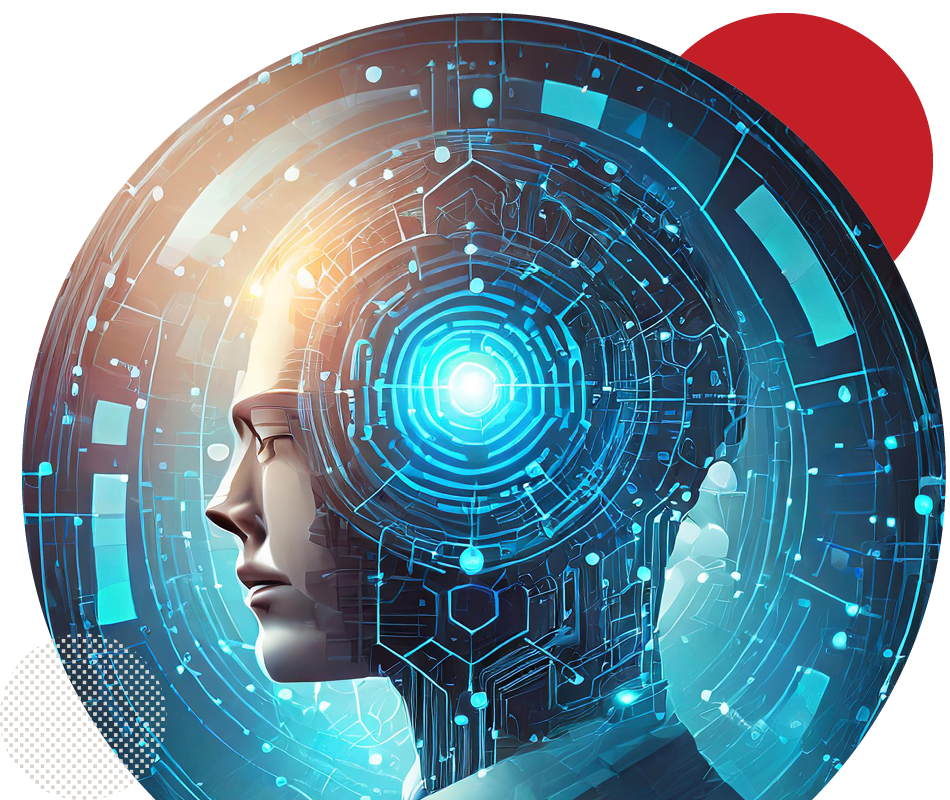
Image generated using Adobe Firefly.
By Diane Couzens | Winter 2024
It was just a few short months after OpenAI launched ChatGPT that Assistant Professor of Information Technology Management Fariba Nosrati started developing several new courses for students in the Anisfield School of Business focused solely on artificial intelligence (AI).
“All of us are already using AI every day – it’s Google’s Alexa, iPhone’s Siri, place detection and so forth – and it’s a rapidly growing field that’s changing the way we work and live. AI is influencing how businesses operate, and we need to train future professionals in these different tools now,” she said. Her colleague, Professor of Management Nikhil Varma, added, “AI will change the landscape of work. Yes, it will eliminate jobs, but it will eliminate those that are inefficient and that have a low economic value, but it is not replacing us as humans. This is how we progress as a society – by becoming more efficient and by orchestrating the human-technology relationship of AI.” Offering a different perspective to its long-term impact on the labor market, Assistant Professor of Computer Science Mohammad Mukhtaruzzaman commented that it is more likely that jobs will be transformed, not lost. “It’s more, how to minimize risk and maximize benefits. At least now, AI cannot create anything totally new. It is just creating a combination of things it is learning from and then it mimics that. So if it learns and mimics a behavior that is an unwanted behavior, then that is a threat. We must minimize those threats. If we could train AI to learn only “good” things, then there are many advantages [to using it].”

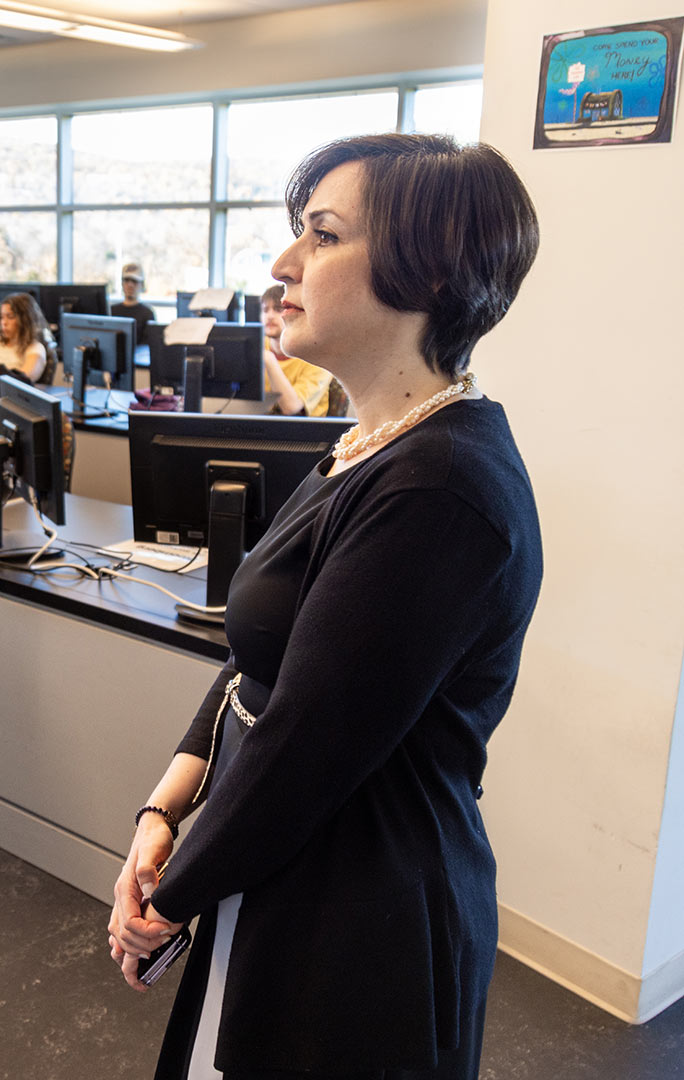
Assistant Professor of Information Technology Management Fariba Nosrati
Showcasing some of these risks and benefits, Varma assigned Master of Business Administration students in one of his courses to generate a new employee handbook for a fictional company by having a dialogue (known as prompt engineering) with an AI tool. While it saved the students time during the creation of the initial draft, they still needed to edit it carefully and use their judgement, critical thinking and decision-making skills before turning it in – had they not, they risked including information that was not relevant or that did not make sense for the context, because the tool does not generate a perfect product.
The courses Nosrati designed draw on her research into the interaction of human beings and AI, notably how people can communicate with AI more effectively to generate more accurate results. Drawing on psychology and human behavior analysis, Nosrati is focused on the users and their engagement with AI. Varma commented, “The lessons we teach [in class] are of a higher order now. Having the tools of AI does not substitute for becoming a subject matter expert. In fact, without that expertise, there can be real consequences.” Rick Nuñez, associate professor of management, agreed, having incorporated several generative AI tools like ChatGPT and Claude into a course called “Launchpad: Entrepreneurial Skill Building.” In this course, students design and launch their own small business over the course of the semester. “The power of AI is its ability to be a ‘force multiplier’ – it has the potential to level the playing field. With the right domain knowledge and some hustle, an entrepreneur can compete against those with much more robust resources, and this type of technology is doing just that by democratizing knowledge and giving someone the ability to very quickly accelerate their skill set.” While many students have already taken courses in entrepreneurship and have developed a foundational knowledge of key concepts, this past year Nuñez experimented and had students in the class use AI tools to generate an initial business plan, create content management strategies and produce prototypical customers for their business. However, students needed to be discerning about what was returned from the tools.

“[This type of technology is…democratizing knowledge and giving someone the ability to very quickly accelerate their skill set.”
— Rick Nuñez
associate professor of management
AI is not limited to college-level pedagogy. In fact, K-12 education has embraced AI tools in the classroom, as Assistant Dean of Teacher Education Adam Fried shared, “The current generation of students are digital natives, and AI is one of those resources that is being used to extend their learning, to generate custom learning plans that cater to each individual we are teaching. There are even tools that help us check on students’ mental health and well-being. We are teaching today for the next ten years, and we don’t know what that looks like. Instead, we have to think about what is going to help me with this particular student? What am I giving to them now that’s going to help them adapt in the future?”
There are many more examples why human interaction with AI is a critical step in the process. A double-major in history and American studies, junior Michelle Kukan is conducting a faculty-student research project with Professor of History Stephen Rice to add and analyze books in the American History Textbook Project. During their multi-phase project using ChatGPT 4.0 and Humata AI, one avenue they are exploring is how historical textbooks present either positive or negative views on particular topics or individuals, essentially making an initial identification of biased presentations of history. Rice gave the example, “It’s possible now to have an initial analysis of bias almost instantly. You can find out, there’s a book that portrays Andrew Jackson in negative terms and subsequently there is a discussion of a Cold War politician comparing that politician to Andrew Jackson. If you were reading a book physically or even online, you might not see that parallel and recognize it as an unfavorable portrayal.” It also provides the ability to very quickly compare multiple texts and see which portrays more positive views of a historical figure. Kukan’s role is to review the initial conclusion and the texts to determine if AI has made an accurate call. Some of the other topics they are exploring include how textbooks summarize information on Native Americans and concepts like slavery. As Kukan noted, “I have to keep in mind the historical language used in the texts. We also need to double-check the conclusions because of glitches or inaccuracy from the AI.” Commenting further on the limitations, Fried added, “AI can’t build trust. As teachers, we have to create that trusting environment. What AI can do is free a teacher and allow them to build and create knowledge with their students through deeper engagement with the concepts.”
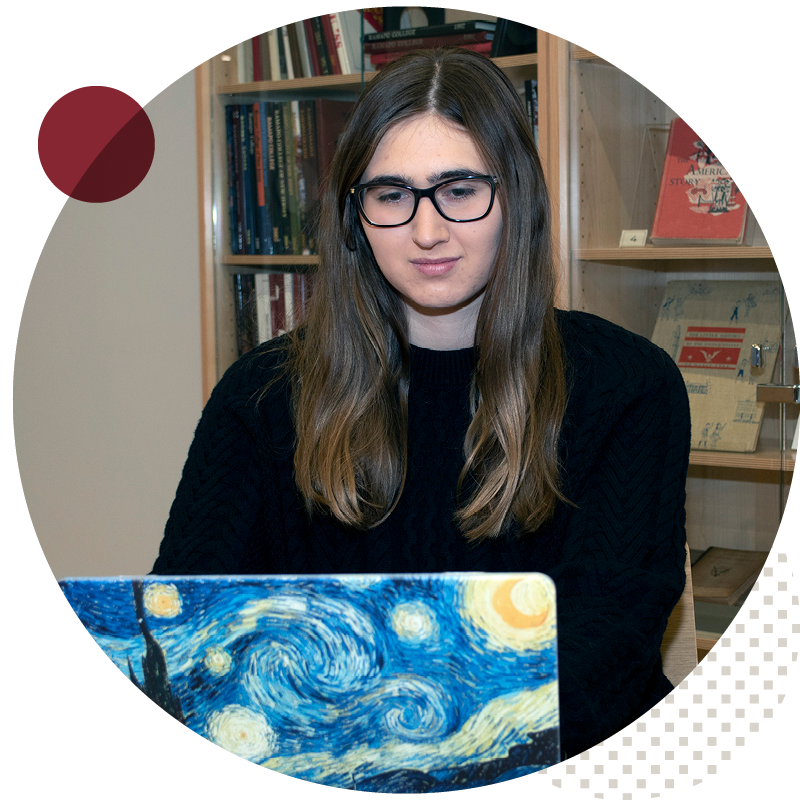
Michelle Kukan ’25, a History/American Studies Major, using artificial intelligence with the American History Textbook Project to detect bias in History texts.
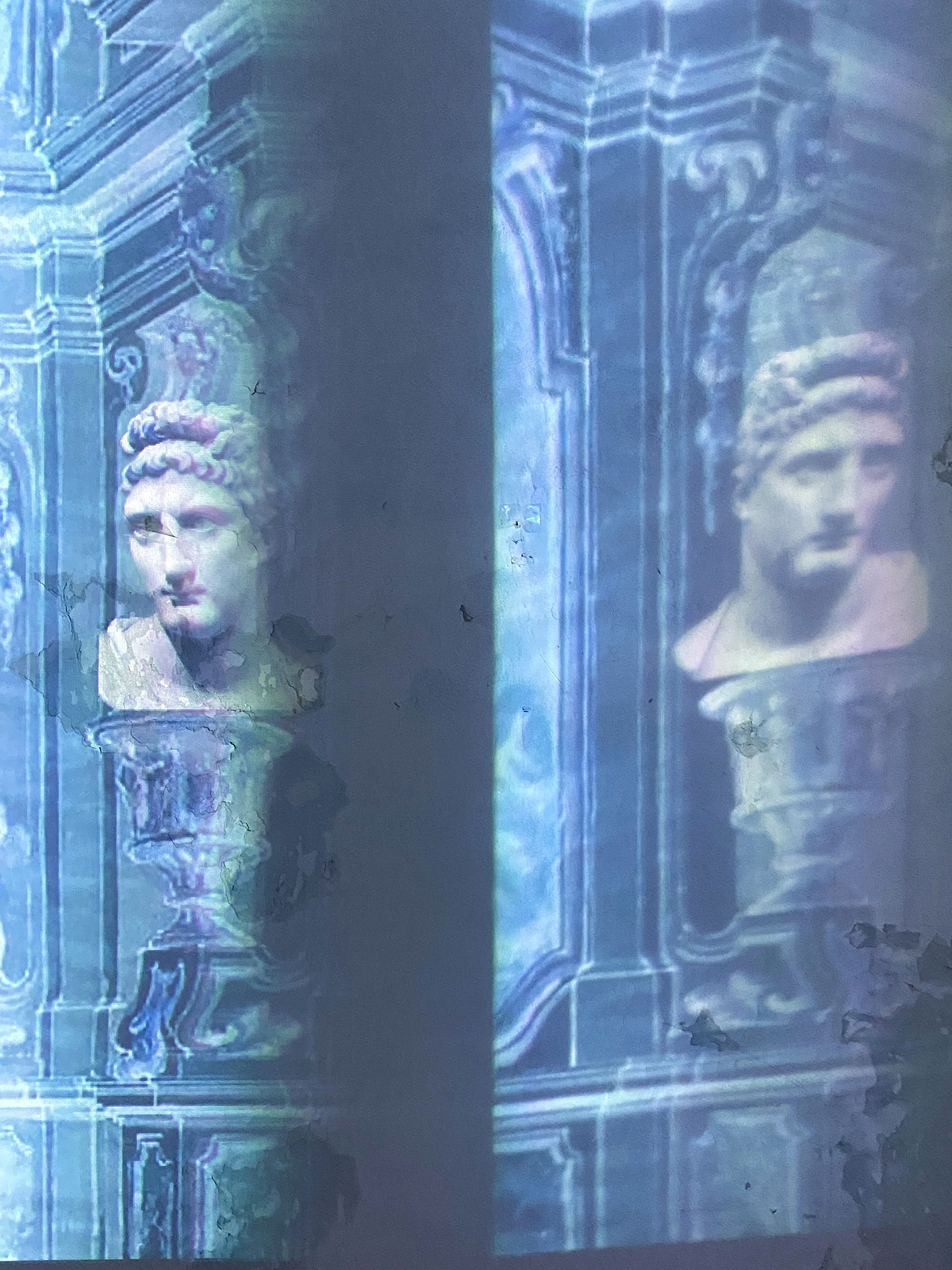
Bias is a human construct, but AI can be taught to recognize it as outlined in the analysis Kukan and Professor Rice are conducting. In a similar way, AI can learn how to generate art and music. “All That is Seen and Unseen”* is an installation opera in which the images, sounds and text were all generated using AI. In collaboration with Brooklyn-based interdisciplinary artists Lauren Petty and Shaun Irons, Associate Professor of Music (Production) Zach Layton oversaw the composition and lyrics for the opera. He equated this type of composition to a form of curating. “Just like with language, a neural network can be trained on the pitch, rhythm and timbre of any sound data. One second of sound contains 44,100 samples, which can be analyzed, resynthesized and reorganized into new forms according to a variety of methods. In my work I created a kind of audio mosaic based upon the material that the algorithm was trained upon. Then it is your job as the composer and editor to assemble those pieces.”
He went on to say, “I created the material for this opera by training the AI on the music of [18th century] French composer and music theorist Jean-Philippe Rameau. I felt that it was fitting because during his time, Rameau’s musical theories published in his “Treatise on Harmony” were based on the then-nascent science of acoustics. I felt it was analogous to the work I was doing – Just as he had been writing music using a new technology (diatonic harmony), I was also using a new system for this work.”
Professor of Music Industry and Production Ben Neill commented on the importance of integrating AI into the classroom. “Our students are going to have to work in these new paradigms and will have to create these new paradigms.” As part of his book, currently in press under Bloomsbury Academic to be released in 2024, Neill argues that music–like many other aspects of life–is becoming a collective and diffused activity in which everyone can participate in the creation using these tools. “It is the democratization of music…We are at a transformational moment that redefines creativity. It means the way we think about art, the artist and the idea of “quality” in art is questioned.”
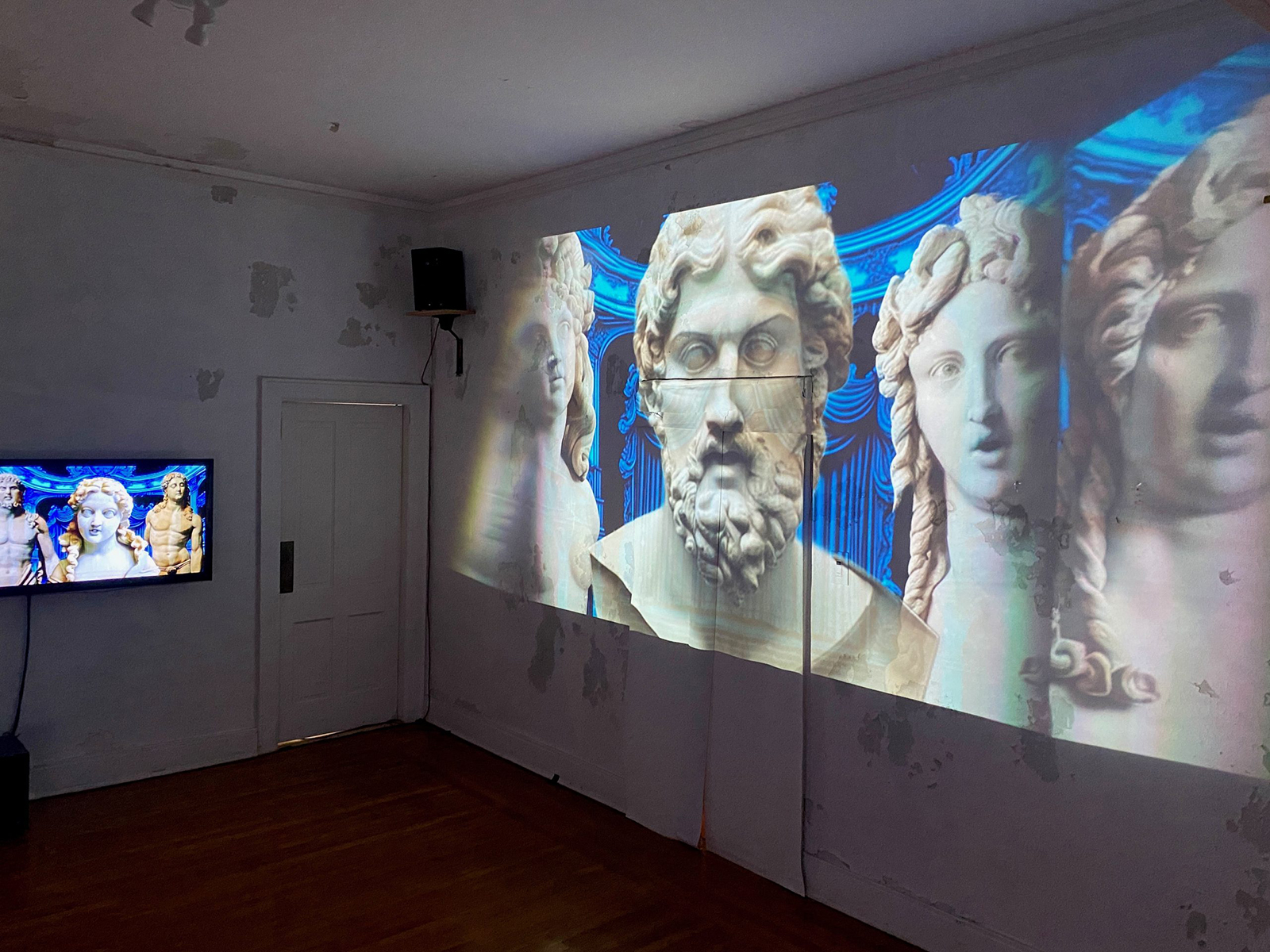
The installation opera “All That is Seen and Unseen”
As Layton noted, “You can argue that AI was created by humans and that it learns information that humans provide it, and therefore it is an extension of the human experience and consciousness. But if you are a songwriter, and you want to express your heart, AI is not going to be able to do that – it’s your heart.”
*All That is Seen and Unseen was partially funded through a 2022-23 Ramapo College Foundation Allocation Grant.
